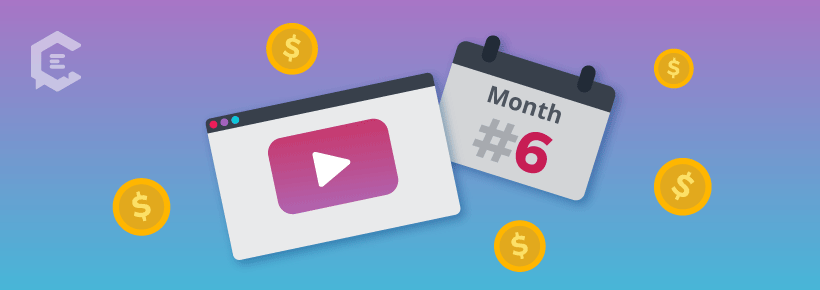For all the exposés that have run on Adweek and DigiDay recently, dozens of business owners or executives still decide daily to “dive into influencer marketing.” They start off starry-eyed at the notion of growth-hacking Instagram’s algorithms, garnering 18 (or 80!) million potential impressions from a few well-seeded Tweets, and harnessing the power of PR without dealing with the dreaded media.
I’ve run dozens of influencer marketing initiatives for companies since my first blog campaign in the year 2009. I have a realistic view of an industry fraught with unrealistic expectations. And yet, even I couldn’t sufficiently warn a fashion e-commerce client as to what he might expect from today’s wildly over-inflated influencer market. After 4 months running a medium-large scale influencer program that engaged 40 micro-level stylistas for his boutique, here’s what my world looks like:
- My IG Explore tab is full of identical girls who have identical hair extensions and identical Nordstroms Sale shopping bags.
- My inbox is full of “media kits” and rate sheets from people who created their blogs less than 2 years ago and had never published a single word before that.
- I am a new member of eight “engagement and support” groups on Facebook. I could easily occupy my entire day with different like/comment/repin/repost cross-pollination activities with “influencers” who generate all their influence through such groups.
- I’ve explained “domain authority” ad infinitum to dozens of people whose supposed value is their supposed power to increase my client’s domain authority.
- If I heard the words, “Hey baaaabes!” one more time, my head may explode.
From all of this excitement, my client has seen a total of 38 sales directly converted from this initiative. Most of those were generated by a former Real Housewife.
10 caveats to consider in influencer marketing
By far the #1 warning I would share with anyone thinking to start an influencer campaign is:
1. Do not expect influencers, no matter how many you hire or how expensive they are, to generate direct sales.
You may get a non-trackable halo effect, or they may drive people to your newsletter, or increase your social media follower numbers, or boost click-through to your site. But if you expect to be able to set a sales benchmarks — e.g., for every 10,000 followers, you expect to see 10 (or 3) sales— you will be disappointed, over and over again.
There are industries that may not be subject to this rule, like cosmetics. And there are the unicorn influencers, who might trigger an item to sell out with a single post. But still, if that unicorn is costing you $5,000 for a post, even selling out an item will not wind up being profitable, especially when the margins are fairly tight ($30 profit on an average sale, for a fast-fashion site).
Here are nine other warnings, to know before you begin:
2. Follower numbers are not a helpful metric. Neither are engagements.
I’m not going to rehash this. Every legitimate outlet has covered how ridiculously easy it is to buy followers. It is equally easy to buy engagements. If you don’t understand that by now, you’re not reading Adweek or the New York Times — although you may be reading misleading op-ed posts on any number of content platforms talking about how crucial influencer marketing is. Those op-eds are all written by firms who have an influencer or 10 to sell you. Speaking of which…
3. Most platforms and agencies are not going to help you keep costs down, or choose real influencers. They’re there to keep the costs high, and they don’t care about authenticity.
Almost every agency (PR, management and representation) and most platforms charge a markup on top of influencer rates. The higher the rates, the more markup can be charged. Also, many reps and platforms also take from the influencer a percentage of influencer fees for projects the agency/platform has booked them. Agencies and platforms are cashing in on both sides. Why would they want to negotiate on your behalf? Answer: They don’t.
If a platform or firm isn’t willing to loop you into rate discussions with the influencer and let you pay the influencer directly, they are very likely charging a markup… and possibly double-dipping and taking money from the influencer too.
4. True follower count and published follower count are wildly out of sync.
There’s no guaranteed accurate way to gauge what percentage of a person’s follower numbers are real. No social channel allows it. Klear’s True Reach tool is the only one that attempts, and while the company is cagey about how it arrives at the numbers, I’ve decided it’s pretty well aligned with the lowest realistic assessment of how many actual followers a given influencer has.
Just FYI, the range of “true” followers for a fashion/style influencer is 10-25% of their posted number. That means for a *good* influencer, 25% of their supposed follower numbers will see one post every so often. For a low-quality one, only 10% have ever seen one of their posts.
5. Platforms *can* again tap into the Instagram API. Ask your potential vendor how they are utilizing this in your best interests.
From Popular Pays to RevFluence to Fohr, platforms are once again able to access the Instagram API — and through that, some of the only true data available to brands and marketers.
After the API change of early 2018, every platform and tool that had been pulling data from the API was thrown out. Very useful tools like SocialBlade were obsolete overnight. And shady dealers everywhere sang with joy! But, gradually with fits and starts, Instagram is giving access to third parties again. It’s limited, but some companies like RevFluence are using this access to let their Verified Influencers and brand clients run campaigns while connected in the API, so that the Reach metric is not potential, it’s real. (This feature is only available for the second tier of RevFluence subscriptions at the moment. Make sure you ask whether you’re viewing True Reach and not Potential.)
6. Of a person’s true active followers, only a small percentage of those see each post.
How many times have you seen that copy-and-paste post around Facebook friends? “Facebook is only letting 20 of my friends see my posts… Let’s make sure I’m seeing yours. Comment and…” blah, blah, blah. That is much worse for most business accounts on social, because they were built in non-organic ways. People never really wanted to view their posts, and so, the algorithm is accommodating that wish.
Say a person has 100,000 so-called followers. Maybe 20,000 are real and active (this is using Klear’s average). So, only a percentage of 20,000 will view any given post. Maybe 8,000 — 40% of 20,000.
7. However, most places are still building their costs around influencer following numbers or other mysterious factors instead of post reach.
The change to API access has also allowed Fohr and other agencies to change their payment structure from rates assessed according to follower numbers to rates assessed per post reach. Some agencies say they’re going to do this but haven’t yet. If they’re still charging you based on follower count or “engagements,” you’re being overcharged.
8. Domain authority ranking should matter… to you.
Since blogs have been around longer and Google makes it easier to get real analytics, many experienced marketers still view blog partnerships as a better investment. SEMRush was our easy and quick tool for gauging blog value. It rates all URLs on a scale of 1-100 in a few different categories that assess the “quality” of a domain. We looked at the domain authority score, which factors in quality of backlinks as well as monthly traffic and a few other variables.
The vast majority of bloggers score well under 40. Most actually score under 25. It is very common for a “micro influencer” to score under a 15 domain authority. This doesn’t cause the average micro-influencer to adjust their monetary ask, because they don’t even know what domain authority is, or what ranking is.
9. No-follow vs. do-follow links should also matter, if linkbacks are a goal.
A huge part of why brands want to be on blogs and media outlets is for the backlinks — high-value URLs provide better-quality backlinks. However, bloggers are not supposed to use the precious link-juicy “do-follow” backlinks if they’ve been sponsored. Any blogger savvy enough to know about domain authority knows that, and is probably giving you a no-follow backlink for your spend. They expect you to know that. If you want quality backlinks, go the traditional PR route or join a whole bunch of engagement groups.
10. Influencers and bloggers want to monetize after 6 months.
Most of an influencer/blogger’s sales pitch revolves around authentic messaging, but the strongest and most heartfelt message I received from outreach to a few hundred bloggers was this:
Overwhelming silence. And about a 10% response rate, of people wanting to be paid for posting.
I use MailChimp, so I saw that more than 70% of recipients answered my most recent email. Five responded. They all requested paid partnerships. All of them were below a 15 SEMRush domain authority score on a 100-point scale. Most did not get 5,000 page views a month on their blog — but they firmly believed that a blog post is worth hundreds of dollars. I know that they are being taught this at seminars, or through online courses that teach them to build for 6 months and then monetize.
Are there exceptions to this rule? Absolutely! Even in fashion and style, you can find one lovely, professional influencer in a group of 20. And typically, those who stay in the business for more than 5 years come to understand the real business of content marketing.
I believe influencer marketing is here to stay, just as content marketing is. And, I don’t want to scare you away from it! Planning these campaigns is a huge part of my business. Just don’t look for an “easy way” or something fully automated or for sanity’s sake a “growth hack.” Put a critical and questioning lens on your influencer marketing plan. Build in KPIs. Ask to see screenshots of people’s post reach. Will you offend them? Maybe. But if it’s your budget, it’s your business.






